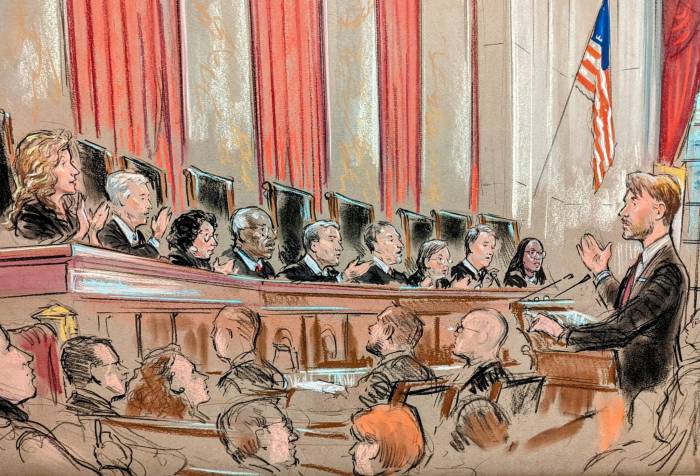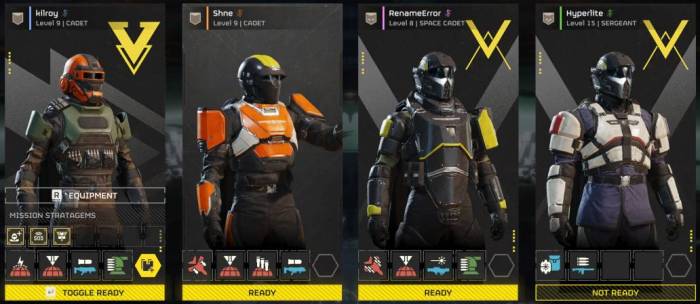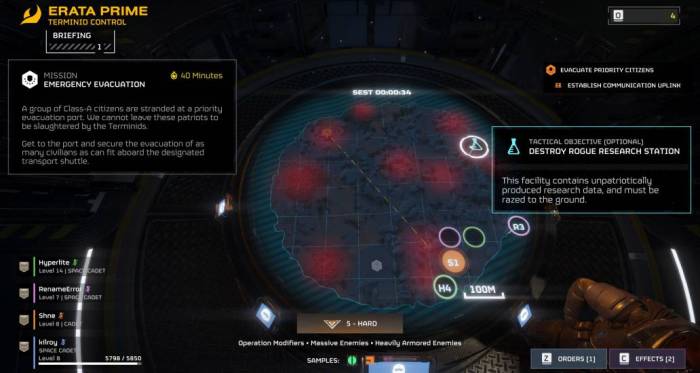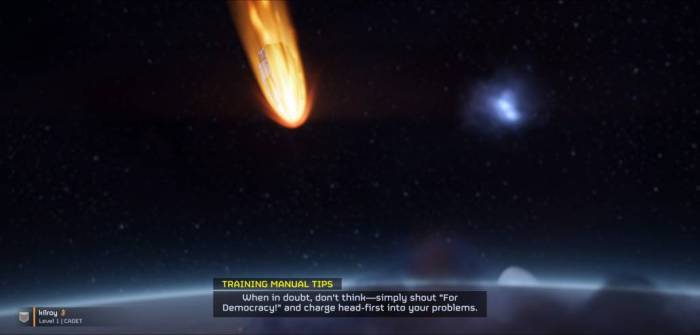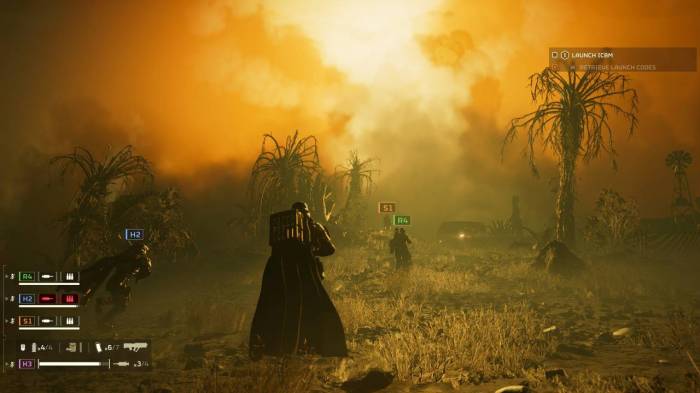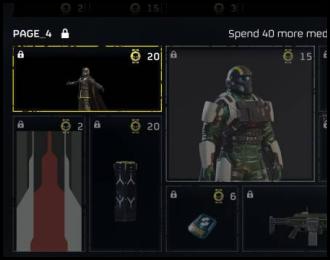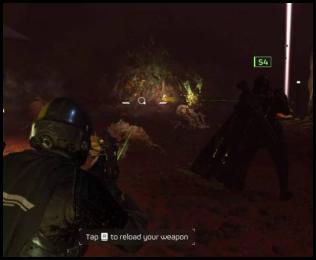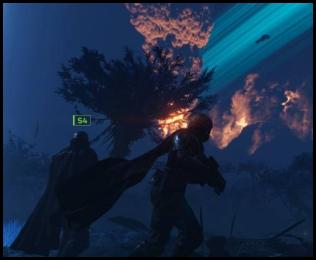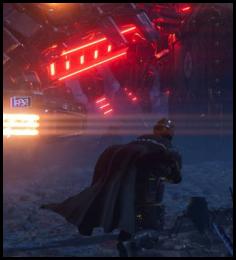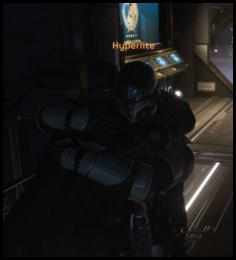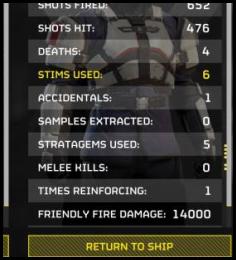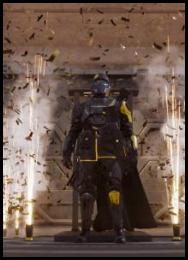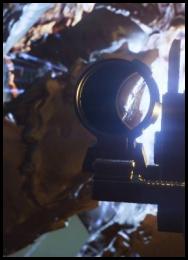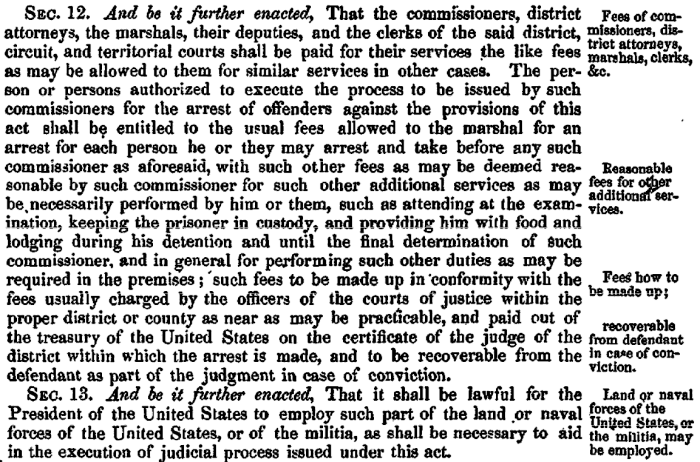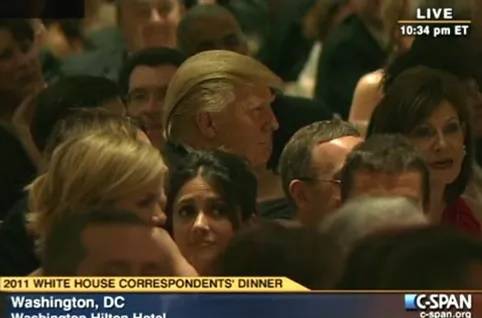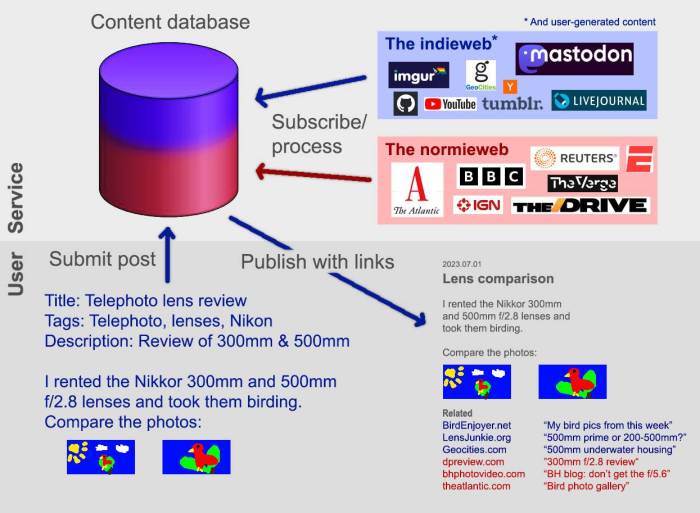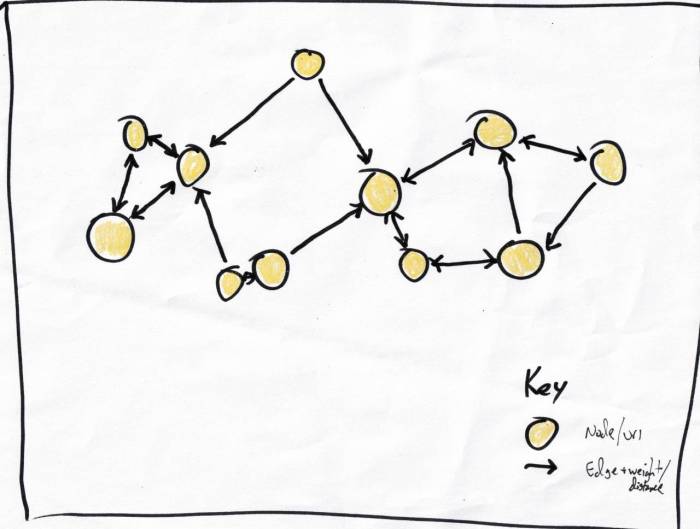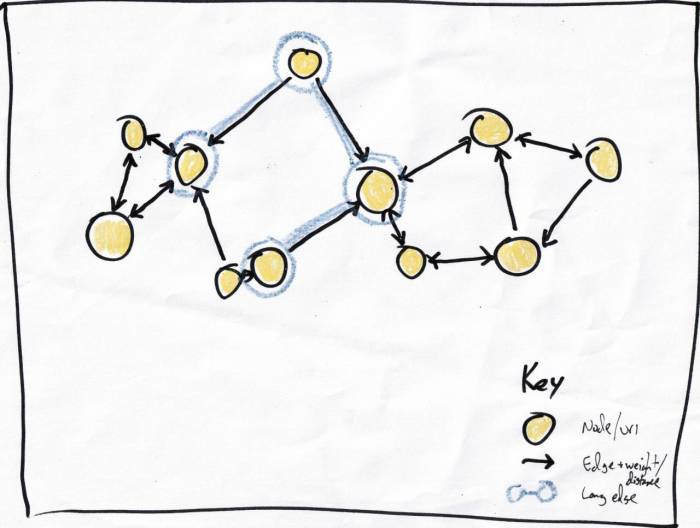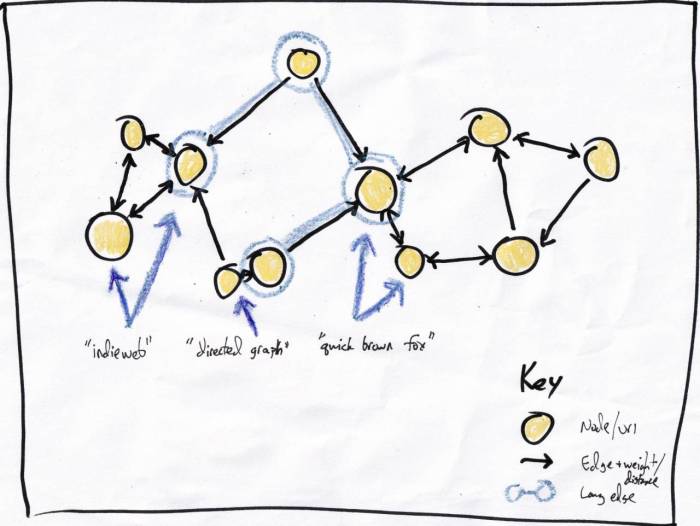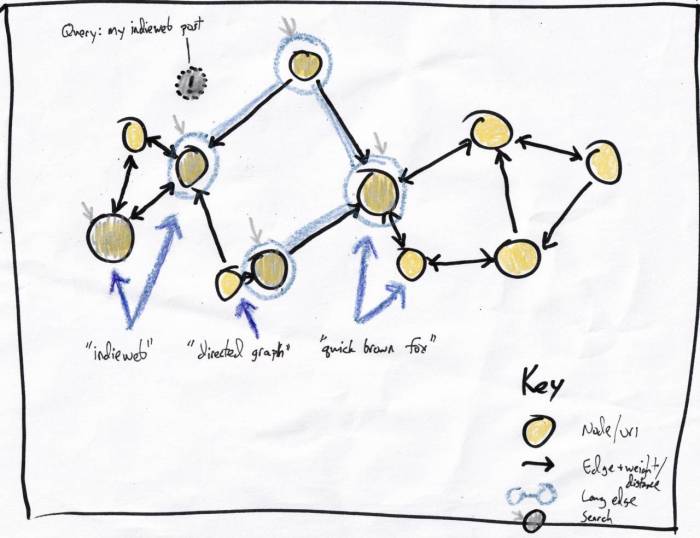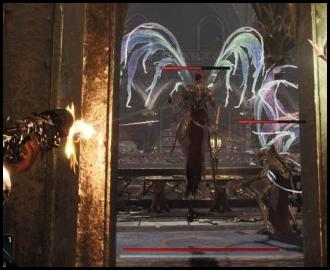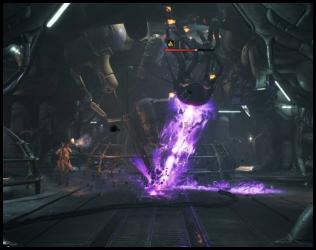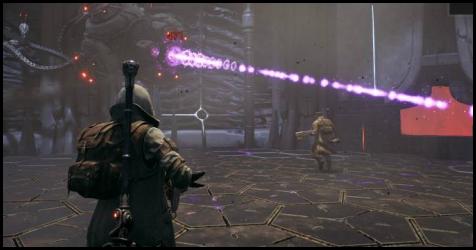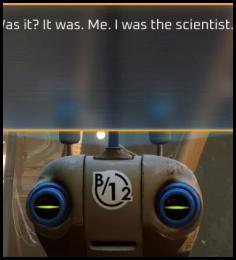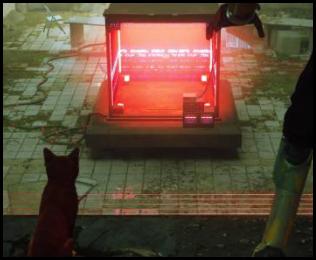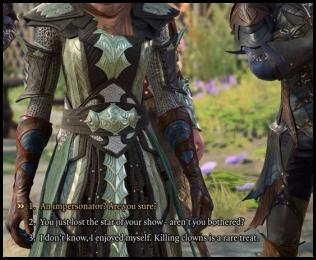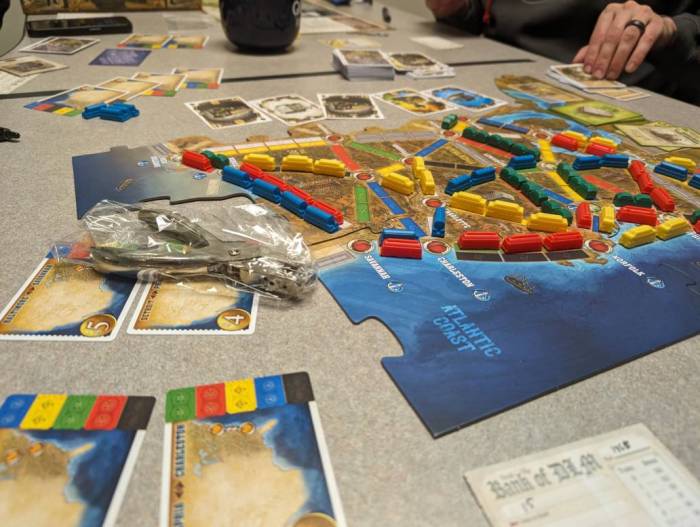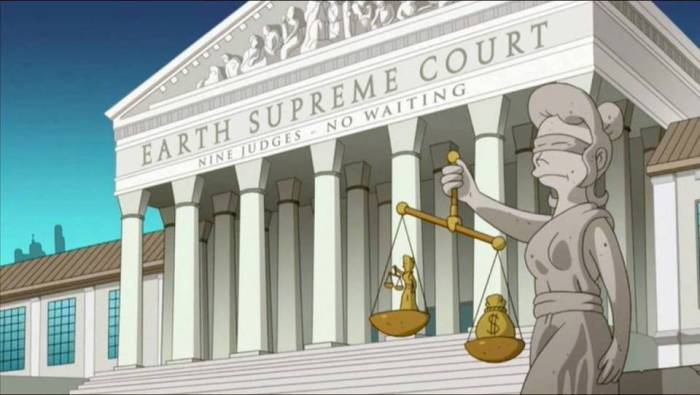Instead of spending the evening reading
SCOTUS oral arguments,
this week I tuned in to the Moody and Cargill hearings on the cspans.
The future of social media
First up:
Moody v. NetChoice. I
talked about this last month after reading the
/r/law mods' funny/distressing amicus brief.
The tldr: Texas and Florida passed
laws that would make social media platforms like Facebook and Twitter civilly liable for removing or obscuring user content based on viewpoint. So if I went on Tiktok and said, "right-handed people smell bad" or "deport all gingers", the platform would face stiff penalties for removing my trollish posts (however accurate they may be).
A lot of the media commentary after oral arguments fit this mold:
"SCOTUS justices appear lost in debate about technology". While I don't think the justices demonstrated extreme savvy with respect to the subject matter, I don't think they were confounded by the technical elements of the discussion.
Related to the Supreme Court's fitness to evaluate internet-age questions lies the uncertain applicability of physical-world precedent.
Moody oral arguments discussed
a handful of related decisions:
- A mall owner could not remove those people who stand with a sign or table to advertise a political or religious perspective.
- Military recruiters could not be excluded from a law school job fair.
- A St. Patrick's Day parade could exclude an LGBT float.
Conduct vs expression
One of central questions was whether moderation is protected expression or simply conduct that can be regulated and litigated. Speaking on behalf of the petitioners,
Henry Whitaker contended that moderation was not an editorial action because, unlike a newspaper op-ed, it is not performed by a human. Justice Barrett and, later, Respondent's counsel Paul Clement, both indicated that algorithms are written by people. Of course, the conversation then went to LLMs and the justices realized they were definitely out of their depth.
Twitter bank
Last year Elon
indicated his interest in getting into banking as part of his X master plan. And that's common for the big platforms; Facebook has a Craigslist and Google Maps has user comments and payment integration. The
variation and integration of big tech product offerings seemed to have frustrated the court's attempt to have a clear discussion on the matter, and they said so.
And there's this tricky little dichotomy:
- A platform like Truth Social is primarily a social/political commentary forum (and billboard for investing in gold). And so while Truth would intuitively seem like a place to require unregulated discussion, it has the strongest freedom of expression interest and would thereby be a candidate for First Amendment protection with respect to moderation.
- Etsy, on the other hand, is a platform for selling handmade items. There's every reason for it to not allow trolling or political discussions in vendor comments and yet it can't claim that it has a expressive interest in doing so.
When asked, Whitaker said that, for example, "democrat.com" would have a First Amendment right to regulate its comment section.
Along the lines of Truth Social and Etsy, some of the justices seemed concerned about the impact on direct communication such as email services and DMs. It certainly seems more disruptive for a messaging service to eat select emails based on content ("you didn't get my Bingmail message about how much I hate Bingmail?"). On the other hand,
I'm not sure Twitter should be compelled to deliver DMs that use no-no words or say "kys irl" or whatever.
It's just an injunction
Justice Gorsuch asked Clement why they brought a facial challenge to the Texida laws rather than an as-applied challenge. There's far more jurisprudence there than I'm familiar with, but the core of it seems to be that
success with a facial challenge requires that there be no legitimate application of the law. Clement asserted this unequivocally but perhaps chose a more difficult battle than he needed.
This discussion also touched on the fact that
this hearing was simply about temporary relief as the thing is fully litigated in the lower courts.
Takeaways
Probably the easiest way out here is to uphold the injuction, provide some gentle guidance, and wait for it to come back. And yet
I almost want to see the major social media platforms pull out of Florida and Texas like PornHub did with the ID law and IVF did with Alabama's liability ruling.
"A curved metal lever"
Way back in the 30s, Congress passed a law banning 'machinegun' ownership. Commonly, this would be a firearm that emits multiple rounds per single pull of the trigger. Rather than phrase the statute exactly that way, the legislature
instead referred to the "function of the trigger". So Al Capone couldn't get away with carrying around Tommy Guns that had push triggers. Since then, there have been numerous attempts to circumvent this law with ingenuity and fun names like the "autoglove" and "fishing reel". These devices have been determined to be in violation of 26 U.S.C. 5845(b) and thereby dealt with.
Until one evening in 2017 when a man killed a lot of people at a concert in Las Vegas. He used a then-legal/now-infamous device called a bump stock to effect a rate of fire common to fully-automatic weapons. Bump stocks use the recoil of the gun to bounce the firearm against the shooter's trigger finger and thereby enable high fire rates from a semiautomatic rifle.
Not long after, the ATF reversed an earlier opinion and
indicated that bump stocks fit the machinegun definition and all existing devices would be condemned. A guy in Texas didn't do that and so we
ended up with Garland v. Cargill.
Arguments
The DoJ, represented by Brian Fletcher, asserted that the
"function of the trigger" refers to the shooter's general input into the firearm. In essence, by applying continuous pressure to the stock and/or front grip, the initial trigger pull is the single input that initiates the sequence of multiple rounds being fired. His analogies included a weapon that is designed to have a "hold to fire" button which respondent admitted would be prohibited.
Respondent, represented by the very busy Jonathan Mitchell, largely rested his argument on two terms used in the original statute:
- The law's "function of the trigger" terminology refers to a mechanical occurrence, the intent of the shooter has no bearing. It is up to Congress to fix this if it's no longer accurate.
- The trigger is a specific component of the firearm, so the mechanical inputs that permit bump stock shooting are beyond the scope of the machinegun law.
Q&A (colloquy)
|
|
|
"I'm going to recoil like this. If your finger is there and causes another trigger pull it's your own fault." |
Justice Kagan had this interaction with Mitchell (paraphrasing):
Kagan: A single button (rather than the oft-repeated "curved metal lever") that results in multiple rounds being fired is a machine gun?
Mitchell: Yes.
Kagan: What if you hold down two buttons.
Mitchell: Also yes.
Kagan: What about one button and a trigger?
Mitchell, after saying it depends on how you define "trigger": Yes.
Kagan: What about an accessory that you push on and a trigger?
Mitchell probably had nowhere to go on this one and resorted to saying that
a bump stock-equipped firearm doesn't require additional input to function as a semi and this is the key difference. It seems like this could be mapped back to Kagan's original examples and I'm not sure why that didn't happen (absent a specific recollection of where the conversation went I assume Gorsuch or Roberts cut in to redirect conversation).
Justice Gorsuch wrung his hands about the poor
bump stock owners that might not be aware of the 2018 regulation and would become accidental felons. He mockingly said that people don't read firearms regulations in their spare time. However people feel about the
Cargill debate, I interacted with very few firearms enthusiasts who did not go out of their way to be abreast of the current state of regulations. Things like loophole windows for high-capacity magazines, the strict meaning of "assault rifle" (select fire), the supposed meaninglessness of "assault weapon" (first used by Reagan iirc), that a belt loop is almost identical to a bump stock (it's not). And beyond the awareness that comes with being an enthusiast, the Vegas/bump stock news saturated the media until the ATF ostensibly addressed the issue. While neither mine nor Justice Gorsuch's experience is comprehensive, I simply cannot believe he made that statement in good faith.
Justice Sotomayor referenced a precedent that seems kind of trivial but also is important; basically that
SCOTUS shouldn't rule in a way that yields a piece of legislation ineffective. While the statute would still ban conventional automatic weapons, the existence of a viable alternative would render it largely meaningless.
Justice Alito asked Mitchell why a machinegun might be banned but not a bump stock. Mitchell waved his hand at "people with disabilities". I didn't get the impression that anyone in the room thought that the authors of the 1930s law would be inclined to see Al Capone running around with a bump stock AR.
Takeaways
Before today, I expected this one to go one of three ways:
- The rather unambiguous fact that bump stocks fire one round per trigger movement.
- Some Chevron-related thing about how the ATF overreached into legislative powers.
- A 2A argument begged by Bruen.
If I had read the briefs I would probably have realized #2 wasn't being argued. I guess whether or not a rifle with a bump stock fits the machinegun definition is a reasonable determination for the ATF to *attempt* to make.
One of the justices asked Mitchell about the 2A argument and he basically said, 'nah'. I wonder if he considered the "curved metal lever" argument to be stronger than
advocating that the court declare the original statute incompatible with founding-era gun control. Perhaps neither the 2A nor the originalism crowd wants to hitch their wagons to the Vegas shooting. So we don't get the "histories and traditions" confrontation
teased in Bruen. At least we have
Rahimi.
So that leaves #1. Based on what I heard today, I guess some of the justices are considering that 26 U.S.C. 5845(b) is meant to cover burst fire and fully-automatic weapons regardless of how they are activated. There's
a rather strong case to be made for having Congress clear up the ambiguity but if it didn't happen in early 2018 it certainly isn't going to happen now. Oh yeah, the GFY24 budget deadline is like Friday or something.
My
impressions of Helldivers 2 after ten levels of carnage.
Prologue
Helldivers 1 was a top-down squad shooter released almost a decade ago that, like Risk of Rain, was promoted to 3D for its sequel. Gameplay was like this:
- Select your career-unlockable gear and matchmake with a squad.
- Drop into a bug/cyborg/energy alien-infested planet.
- Fight your way through a handful of similarish objectives, like destroy a thing, defend a different thing, etc..
- Get to the extract point and hold your ground until the dropship arrives.
It was a great formula for an indie-ish game and is
entirely worth playing if you like bullet hell/Smash TV-like shooters. Replay value came from unlockables (weapons/armor/specials), increased difficulty (new enemies), and the three enemy factions that are very different.
Gameplay
Helldivers 2 plays surprisingly similar to the first game considering the addition of a z axis. In fact, 1-4 from above still apply:
1. Plan your dive
Like its predecessor, Helldivers 2 has
equippable special attacks called 'strategems'. You select four of a few dozen unlockable strategems and a squad passive. Strategems include
large weapon drops, air/orbital strikes, and deployable defenses.
The squad leader selects a drop location that is hopefully not in a red area (where you would be immediately swarmed by enemies). The maps are (presumably) procedurally-generated and
sprinkled with collectible currency and side activities.
2. Dive your plan
Then you strap into your hellpod and o7 the patriotic music in the load screen.
Both Helldivers games take numerous cues from Starship Troopers, including Earth being run by an over-the-top democratic-fascist propaganda state.
3. Shoot and scoot
Helldivers 2 plays a lot like
Left 4 Dead 2.
To survive, you need the right mixture of running and gunning, but with more freedom of movement (L4D2's maps are linear). Like the Left 4 Dead games (and others) the Helldivers 2 map is littered with enemies and you are intermittantly dealt a horde of baddies. L4D2 had a 'director' that would choose when to trigger a swarm, I think there's more determinism to Helldivers 2, i.e. patrols, canary enemies, and proximity to nests.
4. Get to the choppa
The final leg of your journey is to
an extract point where you hold your ground until the Pelican arrives. While not required, it's considered rude to not call in your biggest orbital strike as you board the shuttle.
Commentary
Atmospherics
Is Helldivers 2 too scenic? Unironically yes, much of the scenery is as dynamic and saturated as can be. Do I prefer postcard planets to ugly planets? Absolutely.
The game takes full advantage of players' graphics hardware to render
stunning and desolate worlds that are often impossible to appreciate given the swarms of bugs and cyborgs. Like Battlefield, Battlefront, and the like, outside the glass dome of the playable area there are neat, dynamic backgrounds (mostly orbiting ships).
Often the pretty views are obstructed by dense fog, smoke, or sandstorms. Or it's simply really, really dark.
Low visibility is about as challenging as any single enemy.
RTFM
Not a criticism:
I only found equipment unlocks and ADS settings at Level 8 when
Cooley mentioned it. Since the strategem and ship unlocks are provided at the Super Destroyer terminal, I expected the weapon and armor unocks to be at their terminal. Nope, it's a not-in-universe menu. Training didn't prepare me for this.
Dude, where's my ride?
The first Helldivers had deployable mechs and an APC that was the preferred method of traversing worlds untouched by democracy. They weren't OP but they were safer (contingent on the driver) and faster than hoofing it.
Thus far,
Helldivers 2 has no vehicles. I can think of a few bad reason to exclude vehicles from the game (griefing, "it's too hard to make non-buggy vehicles") but having played lots of
Helldivers,
PUBG, and
Planetside 2, I can conclusively say that
whoever decided to axe vehicles from Helldivers 2 hates freedom.
Update: There is a
teaser video showing a playable mech.
Opportunities lost
Helldivers 2 is great and it's well worth the sticker price. Probably its greatest liability is replay value. Like the first one, Helldivers 2 objectives and mission modes fall into just a few similar categories. The sandboxy/procedural missions are great for cosmetic variety but then don't have the uniqueness or iconicness of, say, L4D2 campaigns.
Considering the amazing visuals and excellent mechanics of the game, it feels like there were some missed opportunities for expanding the gameplay. Examples:
- A campaign, the perfect opportunity to craft some levels/encounters and let the Super Earth dystopia stretch its narrative legs.
- Fortifications. Helldivers 2 has minefields and turrets, the first game had razor wire that could be used to shape enemy advances. It'd be neat to have additional set piece defense options in the vein of Valheim and Fallout 76.
Gallery of democracy
Back
during covid I considered writing brief reviews of all the stuff I watched on streaming services. A lot of it was bad - like that Extraction one and that Clooney one - so there was plenty to rant about. I didn't end up doing it and wouldn't be mentioning
Netflix's recent sci-fi adventure Rebel Moon except that:
- I watched it. It has spaceships and lasers and I didn't find 300 and Watchmen to be terrible.
- I needed some more space travel graphics for my Web 1.1 posts.
And so here's
a review/rant. Spoilers throughout, though not the one 'surprising' plot twist.
Plot
The story follows
an elite soldier name Kora who has gone into hiding in a pastoral village with a geologically-confusing waterfall. A dreadnaught from the evil core worlds empire arrives at the planet to demand grain to feed their war effort. Because somehow the evil empire has FTL and can wage war on a galactic scale but
needs to send capital ships to tiny villages to keep the supply chain alive. I presume once the dreadnaught has flown off with their bushels of wheat they'll stop by a small breadmaking village to have them churn out baguettes at gunpoint. And don't get me started on their vegetable procurement process.
Yeah, I expected a hidden motivation for the dreadnaught's raid on the farming village but there isn't one.
|
|
|
Kora's call to action comes when the garrison left in the village gets a little, well, rapey. Once our hero has nigh-singlehandedly dispatched the soldiers, everyone in the village weirdly walks into the barn in unison. |
After Kora's obligatory attempt to run from her troubles is derailed by her Ramboing the garrisoned troops, she
embarks on a journey to gather resistance fighters. Because why would you simply disband a small village when you can travel the galaxy to recruit people to shoot upward at a vastly-superior enemy.
Kora and her villager companion
visit a handful of worlds to recruit their hero soldiers, demonstrating all of the opsec you wouldn't expect from a former royal guard in hiding, "WE ARE ON A VERY SECRET MISSION THAT IS HIGHLY ILLEGAL, DO YOU KNOW ANYONE THAT CAN HELP US?"
Since this is only Part 1,
by the end of the movie Kora has only just finished gathering her team and, luckily, a couple of dropships of red shirt fighters. But since there has to be a climactic battle, evil Atticus Noble finds them and there is some gymnastic shooting.
Tropefest
The
two things I know about Zack Snyder:
- He loves ultra slo-mo.
- He does comic books/graphic novels.
Expanding on the second one, I assumed Rebel Moon was based on an 80s comic book; it
has all the tropes you'd expect from an old comic series that was excessively inspired by Star Wars. There's a western saloon in a sci-fi universe, a Han Solo knockoff, an elite soldier running from her past, an android that discovers its sense of individuality, an evil general who is basically a Space Nazi. These can be individually charming elements of sci-fi but a modern, conscientious writer would presumably not use them like a checklist.
Also very comic booky: Kora gathers a team of like three or four superheroes to take on thousands of enemy grunts with a large spaceship. The final superhero, luckily, has a few dozen soldiers of his own but
Part 2 looks like it'll have that obligatory scene where the heros are surrounded by enemies and have to shoot in circles, back-to-back.
Anyway, despite all the hallmarks of a naive decades-old comic, according to Wikipedia
this is an original, modern script. Wow.
A few more
|
|
|
The sets are very small and greenscreeny. This one also features the least-solicited flashback in the history of streaming cinema. -"Why did you just tell me your entire life story?" -"Because, guy whose character arc is overcoming cowardice, I need you to trust me." (I don't strictly recall if that was Kora's reason for the lengthy flashback, it was something like that.) |
|
|
|
The Mos Eisley knockoff scene is introduced with the obligatory shots of various alien patrons giving menacing looks. Despite the abundance of extraterrestrials in the background, the protagonists are all human. The villagers? Human. The evil soldiers? Believe it or not, human. |
|
|
|
After defeating Atticus Noble, the heros return to the farming village to, like, Home Alone it or whatever will stop a hangry battlecruiser. |
|
Storypost | 2024.02.21
|
|
 |
 |
Dani turned three this month. Since our morning conversations are often about
the purple race car she is going to get when she's older, I found a starter vehicle.
We had to do some videos for school applications so I finally learned how to
shoot video on the D850.
We've had quite
a lot of rain recently.
I listened to some of the Trump v. Anderson oral arguments (thanks, NPR) and read the rest. My three takeaways:
- The Colorado Supreme Court decision will be overturned (this is widely agreed-upon).
- The Fourteenth Amendment and this insurrection kind of broke federalism.
- The court's opinion beyond the simple yea/nay for Trump remaining on the ballot could be rather impactful.
A different perspective
Petitioner presented
an argument that I hadn't read before the SCOTUS hearing - possibly because I was in the lab for a few weeks jamming out a lengthy report. With all the talk of the meaning of 'officer' and retaliatory disqualifications, this argument was refreshingly concise and creative.
To summarize,
there aren't a lot of qualifications to be president:
- Don't run a Super Bowl ad comparing yourself to your uncle, JFK.
Okay, here's the real list:
- Be age 35 or older.
- Be a natural born US citizen.
- Don't be seeking your third presidential term.
- Don't engage in insurrection having previously taken an oath of office unless Congress grants you an exemption.
One of these is not like the other. That is,
once 1-3 have occurred, they cannot unoccur. The congressional reprieve afforded by number 4 means that you could make the following argument:
 Jonathan Mitchell
Jonathan Mitchell |
Section 3 still allows the candidate to run for office and even win election to office and then see whether Congress lifts that disability after the election. This happened frequently in the wake of the Fourteenth Amendment where Confederate insurrectionists were elected to Congress, and sometimes they obtained a waiver; sometimes they did not. And each House would determine for itself whether to seat that elected insurrectionist because each House is the sole judge of the qualifications of its members.
|
I found it surprising that there was early history of congressmen being elected and not seated. Regardless, a pedantic interpretation of Section 3 of the Fourteenth Amendment indicates that
the possibility of a congressional re-qualification means that no one can be removed from the ballot based on 14.3. Speaking for the respondents, Jason Murray asserts that you're, essentially, guilty until pardoned:

|
JUSTICE GORSUCH: All right. But just circle back to where we started, right? This is Section 3. Your authority has to come from there. And it's about holding office and it's a particular kind of disability that can be removed by Congress and it's the only one like that, right? They can't remove age or citizenship. How should that inform our thoughts about a state's efforts to regulate the ballot for a federal office?
MR. MURRAY: The colloquy that my friend had with Justice Alito earlier, I think is illustrative here. The fact that Congress has an extraordinary removal power does not negate that the disability exists today and exists indefinitely into the future, much like the fact that Congress -- that the president can pardon somebody for criminal conviction doesn't make that conviction somehow -- somehow contingent.
|
Both perspectives aren't unreasonable but manifest as very different types of potential disenfranchisement.
Disenfranchisement
Voter disenfranchisement concerns are all over this debate, mostly with regard to removing a candidate from the ballot. The petitioner's view is that Trump should be on the ballot, possibly elected, and simply not inaugurated should Congress not give him a 14.3 exemption. Strictly, their position is that 14.3 is inert without additional legislation and that the president is not covered by Section 3, but failing these they claim that he cannot be excluded from the ballot until inauguration day.
It's one thing to make voters choose their second favorite candidate, it's an entirely different thing to disqualify a candidate after the votes are cast.
Griffin and self-execution
Griffin was suggested by some commentators to be a clear indicator that 14.3 is not self-executing.
 Jonathan Mitchell
Jonathan Mitchell |
Griffin's Case involved a convicted criminal who was seeking a writ of habeas corpus on the ground that the judge who tried his case was an insurrectionist disqualified under Section 3, and Chief Justice Chase realizes that if he enforces Section 3 in this situation, it would nullify every official act taken not only by this particular judge but by anyone who is an insurrectionist or arguably an insurrectionist under Section 3.
|
Mitchell said they weren't relying heavily on Griffin which as otherwise been cited as the final word on the matter.

|
JUSTICE SOTOMAYOR: Griffin was not a precedential Supreme Court decision.
MR. MITCHELL: That's correct.
JUSTICE SOTOMAYOR: All right. It was a circuit court decision by a justice who, when he becomes a justice, writes in the Davis case, he assumed that Jefferson Davis would be ineligible to hold any office, particularly the presidency, and treated -- and this is his words --
MR. MITCHELL: Mm-hmm.
JUSTICE SOTOMAYOR: -- Section 3 as executing itself, needing no legislation on the part of Congress to give it effect. So you're relying on a non-precedential case by a justice who later takes back what he said.
|
In response to Mitchell's above admission that Chief Justice Chase was backed into a corner,
Justice Barrett seemed to ask him to make a different argument that allows 14.3 to remain self-executing:
 Justice Barrett
Justice Barrett |
Well, why do you need those consequential concerns, though? I mean, it kind of seems to me that what Justice Kagan is getting at is why don't you have an argument that the Constitution of its own force, that Section 3 of its own force, preempts the state's ability not -- not necessarily, I think, not, to enforce Section 3 against its own officers but against federal officers, like in a Tarble's Case kind of way.
|
It
makes plenty of sense for 14.3 to remain self-executing and have states only be empowered to administer it internally, if not for two problems:
- There needs to be a mechanism for applying it federally.
- As we'll see later, it's not how elections have historically worked.
But we should just take a moment to bask in Justice Barrett's choice of words, "to enforce Section 3 against its own officers but against federal officers". Federal officers. Like the president.
Then there was some discussion of
how separate enforcing legislation would square with the amendment:

|
JUSTICE KAGAN: -- because, if Congress has the ability to lift the vote by a two-thirds majority, then surely it can't be right that one House of Congress can do the exact same thing by a simple majority.
MR. MITCHELL: Yeah, there certainly is some tension, Justice Kagan, and some commentators have pointed this out. Professor Baude and Professor Paulson criticized Griffin's Case very sharply.
|
Essentially, it'd be a little weird for necessary enforcing leglisation to be passed and repealed by simple majority while the 14.3 congressional removal of disability would require 2/3. Alito jumps in to say that the repeal and requalificiation for office aren't the same since they apply at different times and with different levels of granularity.
Most of the justices seemed to settle on, "we don't rely on Griffin but use it to provide insight as to what the writers of 14.3 intended, which is that it was not self-executing." Seems frighteningly like a repeal coming from the judiciary.
Enforcement Act of 1870
Much of the discussion pointed to the
Enforcement Act of 1870 as the other indicator that 14.3 is not self-executing.
 Enforcement Act of 1870
Enforcement Act of 1870 |
Sec. 14. And be it further enacted, That whenever any person shall hold office, except as a member of Congress or of some State legislature, contrary to the provisions of the third section of the fourteenth article of amendment of the Constitution of the United States, it shall be the duty of the district attorney of the United States for the district in which such person shall hold office, as aforesaid, to proceed against such person, by writ of quo warranto, returnable to the circuit or district court of the United States in such district, and to prosecute the same to the removal of such person from office; and any writ of quo warranto so brought, as aforesaid, shall take precedence of all other cases on the docket of the court to which it is made returnable, and shall not be continued unless for cause proved to the satisfaction of the court.
Sec. 15. And be it further enacted, That any person who shall hereafter knowingly accept or hold any office under the United States, or any State to which he is ineligible under the third section of the fourteenth article of amendment of the Constitution of the United States, or who shall attempt to hold or exercise the duties of any such office, shall be deemed guilty of a misdemeanor against the United States, and, upon conviction thereof before the circuit or district court of the United States, shall be imprisoned not more than one year, or fined not exceeding one thousand dollars, or both, at the discretion of the court.
|
I probably need more background on this, but this left me wondering:
- District attorneys are given the duty to bring action against local violators of 14.3. If this was the necessary enforcing legislation, Congress and state legislatures would be free and clear of 14.3? Section 15 casts a much wider net, but simply names the punishment for violating 14.3. That seems orthogonal to the disability imposed by the Fourteenth Amendment.
- The text refers to ineligibility under 14.3 without mentioning conviction, similar to the amendment itself.
- "That whenever any person shall hold office, except as a member of Congress" is kind of interesting juxtaposed with Gorsuch's sneering monologues (not transribed here) about offices and seats.
These sections of the Enforcement Act were repealed in 1948 for whatever reason. Based on oral arguments,
it appears the majority vote required to repeal Sections 14 and 15 effectively repealed Section 3 of the Fourteenth Amendment. Funny how that works.
Office, officer, office under
I need to briefly set ellipses to max:
 Fourteenth Amendment
Fourteenth Amendment |
No person shall... hold any office... under the United States... having previously taken an oath... as an officer of the United States.
|
The ellipsed text lists of bunch of positions. These are important, but for the moment
let's focus on "office under" and "officer of". Petitioner suggests that the answer to both of the following questions is 'no':
- Is the presidency an office under the United States?
- Did Donald Trump take an oath as an officer of the United States?
 Jonathan Mitchell
Jonathan Mitchell |
I think [the "office under" argument is] an even tougher argument for us to make as a policy matter because one would think, of all offices, the presidency would be the one you'd want to keep out the Confederate insurrectionists. That's the commander-in-chief of the Army. So, again, that's why we're leaning more on the "officer of" argument than the "office under."
|
The discussion had remarkably few references to the intent of the Fourteenth Amendment, but at least Mitchell acknowledged it here. Weirdly, nobody seemed to want to consider whether the writers of the Civil War Amendments would have considered
a presidential oath of office to be conceptually equivalent to that of every other position in the USG.
Also mentioned was the funny twist that if the president is not an officer of the United States, every president except George Washington and Donald Trump would still be bound by 14.3 because they had previously held other positions in government.
Perhaps the framers of the Fourteenth wanted the protection from insurrectionists to skip anyone who assumed the office of the president with no prior experience governing. Or perhaps they simply didn't consider that the sole non-officer in the executive might have never taken an oath to the United States in another capacity. Or perhaps they meant that the Commander in Chief of the armed forces and holder of the Office of the President was, in fact, and officer of the United States. It's impossible to know!
De-ellipsified
To expand the part of 14.3 about offices that insurrectionists could not hold: "No person shall be a Senator or Representative in Congress, or elector of President and Vice President, or hold any office, civil or military, under the United States, or under any State..."
Mitchell was asked (paraphrasing), "Why would the president be excluded from the text of 14.3?"
 Jonathan Mitchell
Jonathan Mitchell |
Yeah. I don't think there is a good rationale given that this was compromise legislation. And sometimes this happens with statutory compromises and even constitutional compromises. There's an agreed-upon set of words that can pass both Houses of Congress, but different legislators may have had goals and motivations. They didn't all get their way. In a compromise, everyone goes away miserable.
But this was the text that was settled upon. And it does seem odd that President Trump would fall through the cracks in a sense, but if "officer of the United States" means appointed officials, there's just no way he can be covered under Section 3. The Court would have to reject our officer argument to get to that point.
|
This led to a brief discussion about textualism and originalism:

|
JUSTICE JACKSON: Is there any evidence to suggest that the presidency was what they were focused on?
MR. MITCHELL: There is some evidence of that. There were people saying we don't want Jefferson Davis to be elected president, and there was also -- one of the drafts of Section 3 specifically mentioned the presidency and the vice presidency --
JUSTICE JACKSON: But it wasn't the final --
MR. MITCHELL: -- as an office.
JUSTICE JACKSON: -- but it wasn't the final enactment. So where do you --
MR. MITCHELL: It wasn't the final -- it wasn't --
JUSTICE JACKSON: Right.
|
Justice Jackson goes on to say that using the draft language is probably a bad idea since the final text captured the compromises reached by negotiating parties.
Intentionally or unintentionally, this says a lot about the perils of originalism.
Why should states determine a national election?
A representative of the Colorado secretary of state briefly took part in the proceedings:
 Shannon Stevenson
Shannon Stevenson |
Just this election, there's a candidate who Colorado excluded from the primary ballot, who is on the ballot in other states even though he is not a natural-born citizen. And that's just -- that's a feature of our process. It's not a bug. And then I think, with respect to the decision-making and -- you know, we're here so that this Court can give us nationwide guidance on some of the legal principles that are involved. I think that reduces the potential amount of disparity that would arise between the states.
And then with respect to the factual record and how that gets issued and implemented, the states have processes for this. And I think we need to let that play out and accept that there may be some messiness of federalism here because that's what the Electors Clause assumes will happen. And if different states apply their principles of -- of collateral estoppel and come to different results, that's okay. And -- and Congress can act at any time if -- if it thinks that it's truly federalism run amok.
|
It seems to be uncontested that
Article II grants states the power to administer elections.
 Jason Murray
Jason Murray |
MR. MURRAY: Because Article II gives them the power to -- to appoint their own electors as they see fit. But if they're going to use a federal constitutional qualification as a ballot access determinant, then it's creating a federal constitutional question that then this Court decides and other courts, other states -- if this Court affirms the decision below, determining that President Trump is ineligible to be president, other states would still have to determine what effect that would have on their own state's law and state procedure --
|
And so the justices wrung their hands about states dictating national elections by disqualifying candidates. And they're right,
it's a national election, it doesn't make sense to have different rules for the same race. But the text, original intent, histories, and traditions seem to all say that it's a power granted explicitly or implicitly (via the Tenth) to states. The Fourteenth Amendment's introduction of a subjective qualification for president (not being an oathbreaker) seems to have thrown a wrench in the works.
Well, maybe it's not the only subjective qualification. This entire debacle can be traced back to
a particular birtherism-related public humiliation at the 2011 White House Correspondents' Dinner. As far as anyone can tell, that night is the reason Trump ran for office, the reason he was fixated on undoing all of his predecessor's accomplishments, and the reason he cancelled the event.
The birther thing did lead to
eligibility challenges that didn't seem to go anywhere. Perhaps
this isn't so much a problem with the Fourteenth Amendment as it is a problem with the post-truth era.
First mover and collateral estoppel
Vaguely: collateral estoppel, in certain situations, prevents things from being relitigated on a state-by-state basis. In the case of 14.3 disqualifications,
there could be a situation where states are be beholden to the judicial decisions of the first court to weigh in.

|
JUSTICE JACKSON: And there is no federal litigation [for insurrection], you would say?
MR. MURRAY: Well, that's correct, because there is no federal procedure for deciding these issues, short of a criminal prosecution.
|
Referring back to the Enforcement Act of 1870, district attorneys were given the responsibility to bring civil action against local insurrectionist oathbreakers. There was/is apparently no equivalent for federal positions. According to Mr. Mitchell, the candidates were simply not seated after being elected.
So
perhaps this means Jack Smith needs to add an insurrection charge to the Jan 6 prosecution. That doesn't seem like the threshold established by the Fourteenth Amendment or contemporaneous legislation, but the justices appear reluctant to allow a district court finding of fact determine a matter of disenfranchisement.
Cats sleeping with dogs and other effectualism that is beneath SCOTUS

|
CHIEF JUSTICE ROBERTS: -- I would expect that, you know, a goodly number of states will say, whoever the democratic candidate is, you're off the ballot. And others for the Republican candidate, you're off the ballot. It'll come down to just a handful of states that are going to decide the presidential election. That's a pretty daunting consequence.
MR. MURRAY: Well, certainly, Your Honor, the fact that there are potential frivolous applications of a constitutional provision isn't a reason --
CHIEF JUSTICE ROBERTS: Well now, hold on. You might think they're frivolous but the people who are bringing them may not think they're frivolous. Insurrection is a broad, broad term. And if there's some debate about it, I suppose that will go into the decision and then eventually, what, we would be deciding whether it was an insurrection when one president did something as opposed to when somebody else did something else? And what do we do? Do we wait until near the time of counting the ballots and sort of go through which states are valid and which states aren't?
|
Lol.
Roberts: What if people bring frivolous, partisan actions? You know, "you're off the ballot!"
Murray: I-
Roberts: How dare you! Those frivolous, partisan actions are something
people believe in.
And "Do we wait until near the time of counting the ballots and sort of go through which states are valid and which states aren't?" That's what Petitioner is suggesting, bro.

|
CHIEF JUSTICE ROBERTS: And now you're saying well, it's all right, because somebody, presumably us, are going to decide, well, they said they thought that was an insurrection but they were wrong. And maybe they thought it was right. And we'd have to develop rules for what constitutes an insurrection.
MR. MURRAY: Yes, Your Honor, just like this Court interprets other constitutional provisions, this Court can make clear that an insurrection against the Constitution is something extraordinary.
|
Murray wasn't great in these oral arguments but, hilariously, "yes, we have a system for adjudicating these things, it's called the justice system, perhaps you are aware".
Mutiny
There was another painful Gorsuch exchange in which asked Murray if a subordinate of the president or other
officer could go rogue on the grounds that they thought their superior engaged in insurrection. It was meant as an, "Aha! Without codification and conviction, allowing 14.3 to self-execute would mean chaos!"
Murray painfully tried to not answer the question and instead gestured vaguely toward the impeachment process.
Maybe one of the briefs had more on it, but this seems like exactly what we want. Civil servants are certainly able to
act freely at any time with the understanding that, say, guessing wrong about whether their superior committed insurrection would be eventually adjudicated. If a Union general decided to switch sides and ordered his soldiers to do the same, I imagine the authors of the Fourteenth Amendment wouldn't tell the subordinates to wait for proper enforcing legislation, trial, and conviction.
Consider if, on Jan 6th, someone had declared "you're no longer the boss due to 14.3 and I'm eager to defend this position in court". How disasterous Perhaps there'd be no missing USSS records from that day. Perhaps Charles Kushner and Roger Stone wouldn't have gotten their pardons. Perhaps hundreds of classified documents wouldn't have been relocated to a beach club. I don't know Neil, maybe that's how it's supposed to work.
What's next
So this one is getting overturned, but
the manner in which it is overturned will matter.
- Will Gorsuch get his way and have the majority opinion determine that the president is not an officer of the United States? In what other contexts would this impact executive power?
- Will the court find that 14.3 is not self-executing and was kneecapped by the repeal of two parts of the Enforcement Act? Would a criminal conviction under the federal insurrection statute permit the AG to sue each state to have an insurrectionist taken off the ballot? Or would states have to voluntarily use the conviction to disqualify a candidate?
- If 14.3 is self-executing, can ineligible candidates be put on the ballot on the assumption that they might get a last-minute reprieve from Congress?
- Do states still have the power to run elections for federal offices? If Birthergate 2.0 happens, how does disqualification happen?
Moment of zen
Vice News headline: "Trump's Lawyers Are Making the Judge in His New York Fraud Trial Big Mad".
|
|

|
/u/joeshill
Vice Magazine is written by emo goth edgelords?
|
|
|
|

|
/u/dieseldiablo
On the edge between formal writing and slang? Ooh, how thrilling.
|
And another one from the peanut gallery:
 MrFrode
MrFrode |
Habba: Your Judgeship at this time we would like to assert the divine right of kings and move for a mistrial.
Judge: Sigh, it's your honor and denied.
Habba: You leave me no choice sir, Up, Up, Down, Down, Left, Right, Left, Right, B, A.
|
|
Infopost | 2024.02.15
|
|
 |
My
web 1.1 indexer has been chugging away, though not like 24/7 or anything.
Growth
I
mentioned this previously:
keeping out the bad web isn't easy. Commercial links are everywhere and even the honest cases need scrutiny, e.g. a tech blog linking to Apache docs or something. This is particularly bad for SEO-minded sites that want to create outbound links for rank.
On the subject of wheat and chaff, to paraphrase:
 Rob Rob |
Ick, why are there non-blog links in your recommendations?
|
He's right, of course, I've often described this effort as linking the blogosphere, not the corposphere. Referring back to my original plan:
|
|
|
The bottom right illustrates a hypothetical post with external recommendations that are both indieweb (blue color scheme) and selective normieweb (red color scheme). |
In the original design,
each recommendation set would offer a handful of personal web links and a separate handful of mainstream links. I wasn't sure how to approach the latter other than: "The Atlantic, not Newsweek", "IGN, not Electronic Arts". I should come back to this quandary once I've fried some bigger fish.
Scaling search
Back when I had an experimental (small) post corpus I could quickly iterate over every indexed page. Searching for recommendations was quick despite the unmodest computational demands of
trigram comparison with extra steps. As you might imagine,
the post database eventually grew up and search began to take too long. At this point I could have pivoted to a vectorization/clustering approach but felt I could accomplish something similar with my existing trigram method. Recommendations were looking good, so why not stick with it?
The problem is a clustering one, though. Each post has a ranked list of similar post, though posts #2 and #3 might not be like each other. In thinking about search/recommendation, the vast majority of posts have nothing to do with the subject post, I really just want to consider the cluster.
Since 50% of this project is therapeutic, I set out to create an iteration on my existing design rather than spend hours crawling github libraries. As opposed to the traditional clustering approach of mapping input to a point in n-dimensional space, I decided to
treat each post as a node in a graph.
Simple enough,
each yellow circle is a node/post.
|
|
|
The edges have lengths but I didn't write a number for them. |
Each node can link to n nearest neighbors, nearness being determined by the trigram comparison algorithm. For simplicity I'm using n=2 in these napkin diagrams. The edges are directed but often form bidirectional links. This means:
- Everyone is connected to someone.
- This could form numerous unconnected subgraphs.
Building the graph was as simple as:
for each node, traverse the entire graph and keep the closest n. This retraced the scalability issue that brought me here, but just once per page insert rather than every query.
For the objective of search/recommendation,
I could examine connected clusters of nodes to find the recommendation candidates. And I could have a high degree of confidence that something 500 edges away was probably not worth considering.
Getting to those related clusters for an arbitrary post wasn't obvious. Often, with graphs, you'll have an entry node and traverse until you know you should stop. That's not the case here; if I'm looking for posts similar to
footgolf (based on text content), is traversing from
Yoshi's Island to
ride-on lawnmowers a step in the right direction? The traversal needs to start in or near a cluster and there are often to multiple clusters if the subject post is about
footgolf and
electrical box paintings.
The search feels more like gradient descent. In short, if I delivered you via helicopter into the Sierra Nevadas and asked you to find the lowest point in a twenty-mile square, how would you proceed? You could walk downhill and find a low point, but you would need to traverse the entire 400 square miles to know it wasn't just a low-ish valley. Since the exhaustive approach is, well, exhausting, you might instead ask for a helicopter ride to a dozen points on the map, walk downhill, and then choose the lowest. And you'd be something like twelve times as confident as you would with just one descent.
Based on this view, I started tracking nodes that might provide a geographically-diverse span of the data. There might be a better way to accomplish this, but based on something
Rob sent me, I assembled a list of entry points by
recording nodes with the longest non-infinite edges. The search/recommendation process would still need to figure out how to best walk downhill, but this would give me a well-spaced set of starting points.
All this graph stuff was good but totally decoupled from the actual thing I was doing: comparing post text. What's more, if I selected 64 or 128 starting nodes to span the thousands or millions of webpages stored in the graph, these entry points could be unhelpful in plenty of situations.
Another idea I had kicked around before going the graph route was some sort of hierarchical trigram index. That seemed less fun to draw so I went with the graph approach, but a simple version of the index model could help here. I created
an index of trigrams that appear between [small number] and [larger number] times in the entire corpus. Each index entry has pointers to the representative posts. It's a smallish, fast data structure that often points the search process in the right direction.
Back to my use case: finding recommendations for a post not contained in the graph. Illustrated above, the subject post is the (!) circle, my traversal starts with the gray arrows:
- The blue-circled nodes that are the default starting points based on having a long edge.
- The posts tracked in the index containing the term 'indieweb'.
The closest nodes to (!) are the would-be recommendations, you can see since it's a really small example I don't have to do too much work to get there from the starting nodes.
The traversal process is just a matter of checking adjacent, unvisited nodes and deciding whether to continue. Naively, I could just say, "keep going as long as the results are getting better". For (A)->(B), is the (!)/(B) similarity greater than the (!)/(A) similarity?
In the case illustrated above, the gray x's show traversals stopping, either because the node has already been visited or because the neighbor is less like the (!) node.
Once traversal is finished, the algo has a list of visited nodes and their similarity to (!), analogous to the list of altitude measurements from the Sierras hike.
I have a small web post and a SCOTUS post on deck, but for now, games.
Remnant II
Mine and J's first major Remnant II dungeon was the Beatic Palace. We were admiring the Bloodborne aesthetic when we ran into a bit of a confusing puzzle and/or dead end. After some internet searching it occurred to us that
we'd come upon a not-uncommon glitch where a critical NPC simply does not spawn. And you can't leave dungeons. You just start over. The whole campaign.
Since we'd only just begun, ragequitting didn't seem entirely called for. Happily, Remnant has been fun and largely glitch-free ever since. Probably the most notable thing has been that the boss battles are sometimes traditional (big guy, lots of hp, sequences) and sometimes
a neat sequence like a train of death or mad rush through a Matrixy husk library with giant mechanical tentacles.
Stray
Stray has remained the scenic and tight (gameplay-wise) experience it started as.
Dani still loves playing it.
Baldur's Gate 3
I didn't get any BG3 in over xmas or after :'(
Gunfire Reborn
Me and J got a fun session in with Little J. Also the devs added an ascension mode with
a bunch of cool new ways to spend spirit thingies and create synergistic builds.
Slay the Spire
Speaking of Ascension, while I've had some nights where my brain was too fried for BG3 or productive things,
I've worked on getting Ironclad, Defect, and Watcher up to Ascension 10.
Ticket to Ride Legacy
The gaming crew started
Ticket to Ride Legacy. The major mechanics so far:
- An ever-expanding map.
- Quests.
- Retiring routes once someone's completed them once or twice.
- Small asymmetrical bonuses - start with more cars, choose from more routes, etc.
- Colorado and Utah are haunted lol.
Tomorrow we'll hear oral arguments for
Trump v. Anderson (
the Colorado ballot one). It's been
a great opportunity to learn some more US history and etymology - what is an 'officer', anyway?
 marketrent
marketrent |
"As on January 6, 2021, the December 20, 1860 insurrection in South Carolina was against the forthcoming transfer of executive power to a newly-elected President."
- Reminding the court of its duty, Luttig's brief debunks Trump supporters' stated concern that his disqualification "would be weaponized against others by partisan state courts and state officials."
- That's an "anti-textual, policy argument" that has "no place in this Court's constitutional jurisprudence," goes the reasoning in the brief.
- In support of that proposition, it cites none other than the Dobbs decision that overturned Roe v. Wade, in which the majority claimed that "we cannot allow our decisions to be affected by extraneous influences."
- The brief also pays homage to the late arch-conservative justice Antonin Scalia, arguing that the disqualification clause shouldn't be construed narrowly.
- "A narrow construction to promote judicial restraint is just as bad as an 'unreasonably ... enlarged' construction," it says, citing a Scalia book.
|
There has been
no shortage of amicus briefs submitted to the court, including a laughable one from Vivek that basically says, "This (conservative-initiated) lawsuit only happened because Biden is afraid he can't win re-election."
"Not an officer" ("you're the officer")
 Cryogenic_Lemon
Cryogenic_Lemon |
It is interesting to me that they spent so much time (about half the brief) arguing that the president isn't an "officer". The various legal news sources I follow consistently seemed quick to disregard this argument.
|
I wonder how much of tomorrow's proceedings will focus on the words 'officer' and 'support'.
 MSNBC
MSNBC |
One of [Trump's] claims stands out as especially silly - that he never swore to "support" the Constitution and so, his argument goes, he's not subject to the provision disqualifying people who violate their sworn support.
|
"Elephants don't hide in mouseholes"
From another amicus brief:
 dieseldiablo
dieseldiablo |
There are also elegant principled arguments, like "elephants don't hide in mouseholes", in that case to blow away Trump's not-an-officer smoke. They've been finding ways to reduce and distill longer writing into punchy form.
|
While the
K&D LLC v. Trump Old Post Office and
Federalist 69 talk is riveting,
perhaps there's more to this than terminology.
 BoogedyBoogedy
BoogedyBoogedy |
"But in one obvious and high-profile respect, Section Three as enacted went far beyond the early draft. It referred to all insurrections, past and future, and not merely to "the late insurrection" of the 1860s. It laid down a rule for the benefit of generations yet unborn-for us today, if only we are wise enough and faithful enough to follow its words as written and intended."
It is a rare and wonderful treat to see such good writing in a legal context.
|
The Prof Amar brief was a good read, though it was a bit short on details of the January 6th-like gathering for Lincoln's inauguration. It mainly focused on a variety of
treasonous acts by the outgoing administration leading up to the Civil War.
 Vikram David Amar
Vikram David Amar |
In that First Insurrection [of the 1860s], high-level executive officials in Washington, DC, violated their solemn constitutional oaths as part of a concerted plan not just to hand over southern forts to rebels, but also to prevent the lawful inauguration of the duly elected Abraham Lincoln. The parallels between this insurrection in late December 1860 and January 1861 and the more recent Trump-fueled insurrection of late December 2020 and January 2021 are deeply and decisively relevant to today's case. (Throughout this brief, we accept the factual findings of the trial court regarding
these events.)
If one thinks-as do many journalists and noisemakers lacking historical expertise-that Section Three was only about "insurrections" akin to the Civil War, then the Trump-fueled insurrection of 2020-21 pales in comparison. The invocation of Section Three looks rather cutesy, a gimmick of clever lawyers and law professors.
|
While true in most respects and humorously self-deprecating, the last paragraph fails to address the importance of a peaceful transition of power.
And maybe we'll just get some turbooriginalism
 robotractor3000
robotractor3000 |
The idea of disqualifying an American president from seeking reelection for actions taken in office would have been inconceivable to anaerobic thermal vent dwelling bacteria. So, too, should it thus be inconceivable to us.
|

